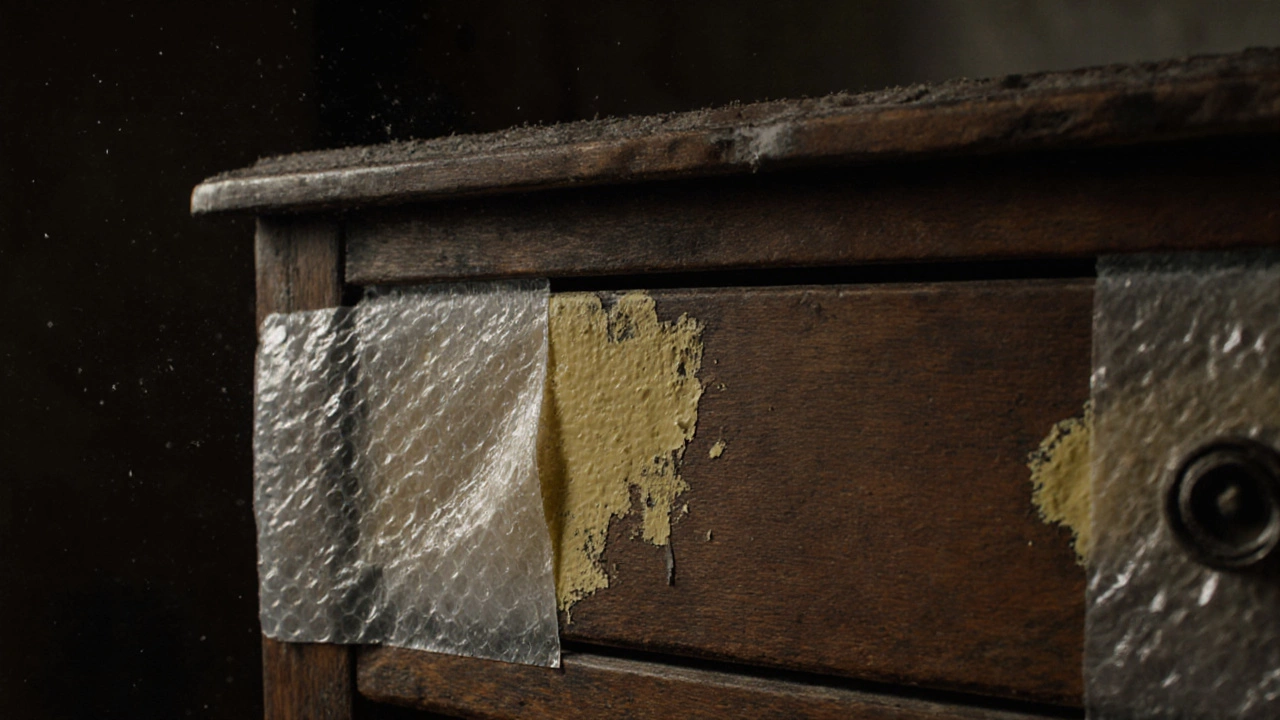Long-Term Furniture Storage: Practical Tips That Really Work
Got a sofa you won’t use for a while? Maybe a set of wooden chairs you’re saving for later? Storing furniture long‑term can feel tricky, but it doesn’t have to be. Follow these straightforward steps and your pieces will stay as fresh as the day you bought them.
Control the Environment
First thing’s first: temperature and humidity matter more than you think. Wood expands when it’s damp and can crack if it dries out too fast. Aim for a cool, dry space – ideally 50‑60% humidity and a steady 65‑75°F (18‑24°C). If you’re using a garage, invest in a dehumidifier or a small heater to keep the air stable. For metal frames, avoid condensation by leaving a thin layer of protective wax or oil on exposed surfaces.
Don’t forget sunlight. UV rays fade fabrics and weaken finishes. Store everything away from windows or cover items with breathable cloths – old sheets work great. Avoid plastic wrap; it traps moisture and can cause mold.
Packing Like a Pro
Start with clean furniture. Vacuum cushions, dust wood, and wipe down any metal parts. A quick vacuum removes dirt that could attract pests later.
Wrap each piece in moving blankets or thick cotton sheets. For sofas and armchairs, use a furniture pad and strap it securely. If you have removable cushions, store them separately in zip‑top bags with a silica gel packet to absorb excess moisture.
Disassemble what you can. Take off legs, arms, or glass tops and label every screw in a zip‑lock bag. This makes re‑assembly painless and reduces the chance of damage during handling.
When placing items on the floor, keep a pallet or a sheet of plywood underneath. This lifts furniture off the concrete and prevents water absorption. Stack heavier pieces on the bottom and lighter items on top to avoid crushing.
Guard Against Pests
Rodents love hidden corners. Sprinkle a natural mouse repellent, like dried rosemary or peppermint oil, around the storage area. If you’re worried about insects, place mothballs (used sparingly) or cedar blocks near fabric items. Check the space every few weeks for signs of activity.
Seal any cracks in walls or doors. Even a small gap lets pests slip in and chew on upholstery or wood. Simple weather‑stripping tape does the trick for most door frames.
Check In Regularly
Long‑term doesn’t mean “never look again.” Set a calendar reminder to inspect your stored items every three months. Look for moisture spots, mold, or any shifting of protective padding. Adjust blankets if they’ve shifted, and replace silica packets when they’re saturated.
When you finally bring the furniture back into the living area, give it a gentle air‑out for a day before using it. Spot‑clean any stains that appeared during storage and tighten any loose bolts.
Storing furniture for years isn’t a gamble if you follow these basics: control climate, pack smart, keep pests out, and inspect periodically. Your pieces will thank you with years of good looks and comfort.
Is Bubble Wrap Safe for Long-Term Storage? What Experts Really Say
Bubble wrap is handy for moving, but it's not safe for long-term storage. Learn why it can damage antiques, electronics, and fabrics over time-and what materials to use instead.
MoreShould You Wrap a Couch for Storage?
Storing a couch isn’t as simple as shoving it in a garage. Wrapping your couch can protect it from dust, moisture, pests, and weird smells that stick around. But should everyone bother wrapping? This article breaks down when wrapping makes sense, what wrapping methods work best, and what can go wrong if you skip this step. You’ll get some hands-on tips nobody tells you in the moving guides. Your couch will thank you later.
MoreDoes Furniture Deteriorate When Stored?
Storing furniture for the long term can lead to various changes if not done properly. Temperature fluctuations, humidity, and pests can all contribute to the deterioration of wood, upholstery, and metal. By understanding the environment and using proactive measures, you can ensure your furniture remains in prime condition even after years in storage.
More


